If you’re an English teacher, vocabulary instruction goes with the territory. We teach so much literature, right? And there are LOTS of challenging words to bring to our students’ attention and have them work with before and as they read. But do you ever feel like the words your students study drift right out of their minds as soon as you move on to the next unit? And then there are just more words to teach?
I wanted to make my vocabulary instruction more meaningful. Especially since research clearly shows that vocabulary makes a huge difference in student achievement. I wanted students to feel empowered knowing and using challenging words. I wanted them excited to use higher-level words in their writing.
Now some of the vocabulary from literature isn’t always the handiest for use in student writing. I decided to compile challenging words that students could readily use in their essays, stories, and journal free-writes—words they could exchange for commonly-used expressions (ex. predicament instead of tough situation). I built my own packets grouped by part of speech, where kids interact with the words. I started actually using the words whenever I could in class. Then I made some attention-getting posters for a word wall to remind students of the words and meanings. Finally, these vocabulary words began to show up in student writing!
Wherever you are with teaching vocabulary, here are 15 STRATEGIES you can use right now to increase student buy-in:
-
Actively Introduce the Word
Make sure you actively introduce the word and its meaning. (Don’t just set students loose on the written word work.) After you give the meaning, tell a little bit more about the word. Use some examples to clarify. Students LOVE when you make a personal connection. If you can, link the word to something current that they can relate to!
-
Pronounce It
Okay, of course we’re going to pronounce it, but I mean PRONOUNCE IT! There are students hearing these words for the first time, so be loud and clear and repetitive. Pronunciation needs to become second nature for them. Have your students repeat the word after you A LOT. (If they can do it in foreign language class, they can do it as part of your vocabulary instruction, right?)
-
Stoplight Color Cards
To help you pre-assess, give each student 3 index cards. Students draw a big circle to cover each card and color one circle red, one yellow, and one green. On the back of the red circle card, they write “never heard of it/don’t know.” On the back of the yellow, they write “might have heard of it/not sure.” For the green, “I know it/can explain it.” Then, you can call out the vocabulary word and have students respond by holding up the card (color facing you) that reflects their prior knowledge. (They keep these to use over and over, and you can use them for literary terms and other questions, too.)
-
Use the Words
It’s common sense when teaching vocabulary, but so easy to forget! Place the words on a list that you can easily see as you teach, so you can use them when you speak to your students. Pepper them into your directions, your class discussions, your reactions and comments (“All chatting will now abate, please!”) ANYTHING! The more students hear the words used, the better!
-
Personal Connection
Ask students, “What’s something this word makes you think of?” Tell your own story, and then have students discuss their personal connection to the word with a partner. Making a personal connection (and partner discussion) always helps to internalize the learning.
-
Fly Swatter
If you’re working with a list of words, try the fun, fly swatter activity as a challenge to introduce your words, or it can be played later as a review game. Jot down the words (mixed up) all over your whiteboard. Divide your class into two sides and line up the first 5 people from each side. Give the first person in each line a fly swatter. Call out a definition. The first student from each line goes up and tries to swat at the correct word. The first to do so scores a point. If neither do, they run back and give the swatter to the next in line, and they try to do the same thing. Continue with words and add more students to the line as needed. The side with the most points is declared the winner.
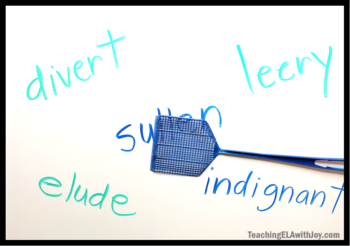
-
Board Pictures
Have a student come up to the board and begin to draw the meaning of a word. As he or she is drawing, students try to guess the vocabulary word. This would be a great warm-up/review of some previous words before tackling a new vocabulary word!
-
Imagined Settings
Come up with a setting (such as stuck at the top of a roller coaster with a friend) and ask students to imagine themselves there. Then ask them to write a sentence or a short conversation in which they could use the vocabulary word(s) in that setting. Have students share their responses with a partner, increasing interaction with the word.
-
Dictionary Share
Maybe we don’t want students to look up words in the dictionary these days. But part of vocabulary instruction is making students aware of what a dictionary entry offers. Students can look up a word with a partner to discover what other information is given (besides the definition) and share out findings with the class.
-
Word Wall
So many of our students are visual learners, and a word wall is perfect for keeping new words and their meanings visually depicted, right in front of them. Students can create their own visuals on index cards or Post-Its, to be displayed by the door or on a low bulletin board. This year, I created 108 Word Wall Posters that look amazing in the classroom and help students use more and more challenging words in their everyday writing!
-
Group Story
In this fun strategy, students in groups of four silently circulate their papers to create stories. The teacher can begin with a starter prompt for everyone in which a vocabulary word is used. For example: Terry definitely needed something advantageous to happen. Students write the starter prompt on their paper and add a sentence. Then each student passes the paper, reads what’s written on the paper they receive, and then adds a sentence to that story. When all four papers have been circulated, each student can read each entire story. The one voted “best” by the group can be shared out with the class.
-
Acrostic Poem
Vocabulary instruction can certainly include poetry! Students write a vocabulary word in capital letters down a sheet of paper. Then they compose a phrase that somehow relates to the word that begins with each capital letter. This strategy helps students to personalize the word. Struggling students might benefit from brainstorming with a partner, especially with a long word. Small visuals can be added. Display these as a wall collage!
-
Vocabulary BINGO
Of course, students love games, and BINGO is perfect to review vocabulary. Just hand out a blank BINGO card and students can choose words to write in from your list. Make sure you call out the definition, though, and not just the word, or you’ll be giving out candy left and right! Also, keep track of the words you use each time so you can “verify” that you really have a winner.
-
Vocabulary Crosswords
Whether they use online sites or plain old graph paper, students enjoy creating crossword puzzles. This activity reacquaints them with their words and meanings, so it’s great reinforcement. Visual learners will be happy to grab a ruler or a computer to create! Be sure students use numbered clues for Across and Down and include an answer key!
-
Require Word Use in Writing
When writing is assigned, require that students use a certain number of challenging vocabulary words. That is, after all, one of the key goals for our instruction! It’s not necessary to tell them which words to use, but let them look up at the word wall or at their word work and decide on some words to fit in. I like to have students highlight them for easy identification when I assess.
Well, there you go! I hope you’ll incorporate several of these strategies to get your students excited about vocabulary! Remember, as teachers we have to provide the instruction first, introducing the words and meanings and offering a variety of opportunities for students to hear and experience the words. With a word wall and some collaborative activities and games, you’ll be on your way with student success leaps and bounds!
Check out these ready-to-use Vocabulary Instruction Resources I created for Grades 6 – 9:

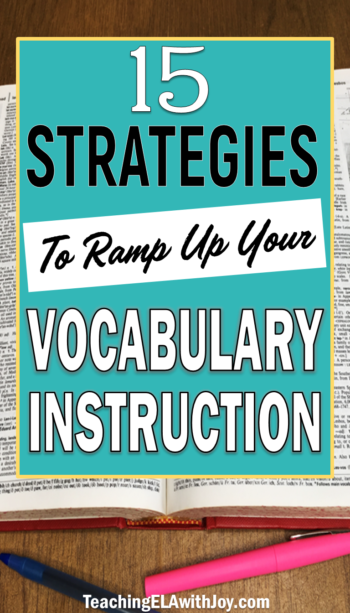
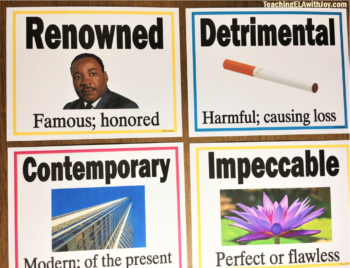
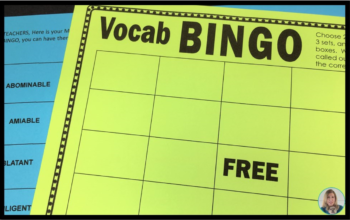
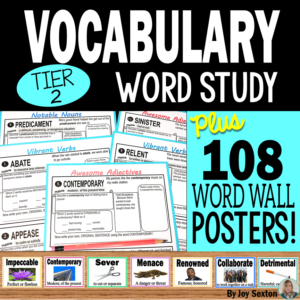
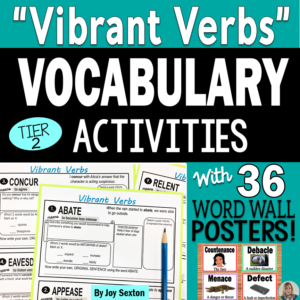
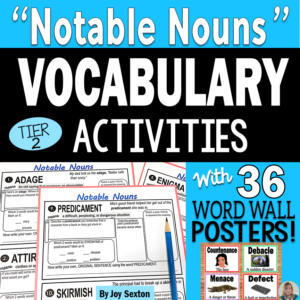
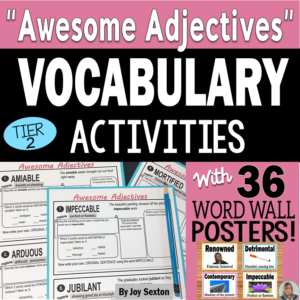
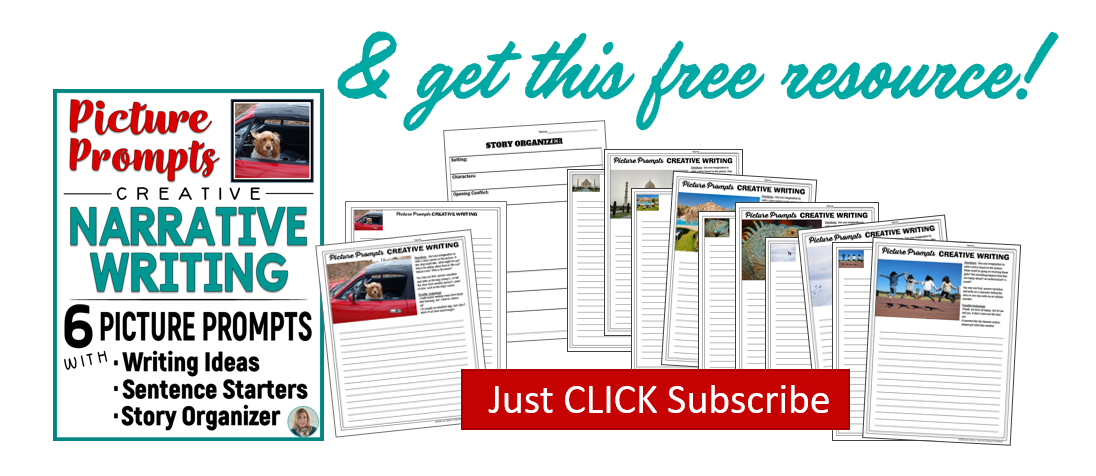


I’m loving the idea of a Word Wall even for middle schoolers. Having my students create it would be an even better way to get a little more vocabulary into some of our short on time periods. I could see them really looking for the best pictures Meme style.
Thanks for sharing! I’m a children’s book author and was looking for ways to introduce vocab during classroom visits. I see several I want to try. Again, thanks.